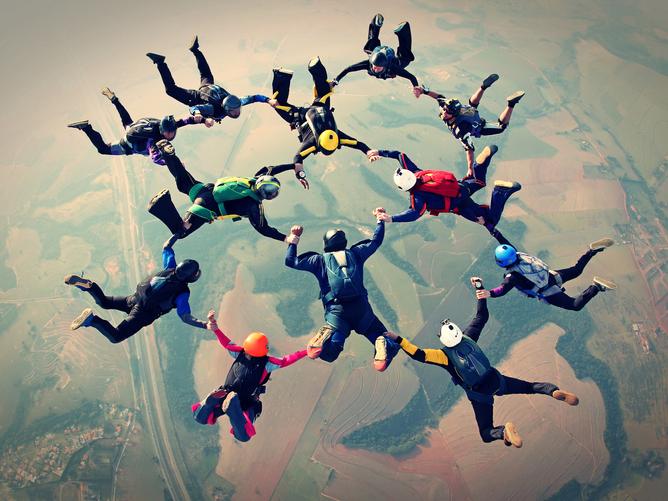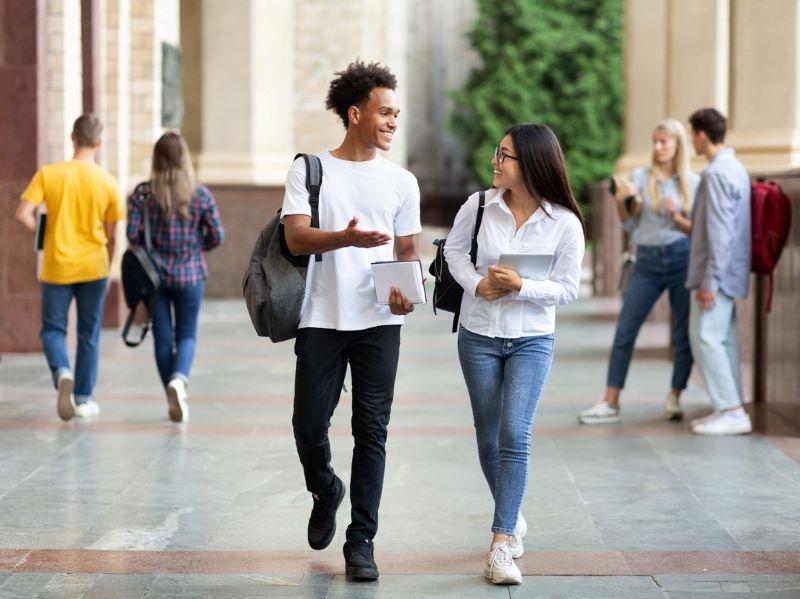Humans are innately social beings, and teaching and learning are often highly social activities. From earliest experiences of learning how to speak through to school, higher education and adult learning for professional development or pleasure, learning is enriched by the social interactions with others. However, the success and impact of these interactions is dependent on the quality and nature of the social experiences. In higher education, learning occurs in a variety of social contexts – one-on-one, in small and large groups, online and face-to-face – and in a variety of environments, both formal and informal. With so much social and interpersonal variability and complexity, it can be challenging for teachers and students to successfully navigate social interactions to produce positive experiences in learning.
In this fourth article in our series covering the seven principles in the Higher Education Learning Framework, we look at interactive learning in detail.
- Principle 1: Learning as becoming: what do students become as a result of their HE experience?
- Principle 2: Contextual learning: linking learning to the real world
- Principle 3: Emotions and learning: what role do emotions play in how and why students learn?
Using social dynamics to enhance the learning experience
Social interactions can allow students to feel connected to others, to build a shared understanding of one another and the learning experience, and to become familiar with the learning environment and those within it. In a learning environment, this underpins engagement – feeling connected not only to what is being learned, but to those whom students are learning with and from. Feeling socially connected enhances an individual’s sense of belonging and relatedness. Belonging is essential to instil and maintain motivation for learning and it can assist in making students feel safe and comfortable.
The principle of Interactive learning encompasses the nature of social interactions in learning. Behind social interactions are a range of conscious, unconscious, intuitive and innate processes and skills that allow us to instigate, observe, interpret, understand and participate in social interactions. Having a greater understanding of the processes involved in social interactions and how these influence social dynamics and learning can be valuable in designing and delivering engaging learning experiences.
Often emphasis is placed on an individual student to build their understanding, manage their learning and regulate their emotions and motivation, thus overlooking the natural social dynamic that exists in shared higher education learning contexts. However, providing opportunities in the learning context for students to interact and develop familiarity with one another and the experience can create connections. Students can then draw on one another to enhance their own and others’ learning and motivation.
Students will usually seek to understand others and value their perspectives when situated in structured and designed social opportunities. Active learning environments and rich social interactions provide a way to do this. Exposure to different opinions, thoughts and perspectives are chances for students to co-create knowledge with others, consolidate existing knowledge, challenge and expand their assumptions, and engage deep critical thinking.
6 ways to implement Interactive learning in higher education
- Include opportunities for students to develop connections with one another early in their studies. Introductory online discussions or small-group tasks with purposeful questions for students to ask one another can be helpful icebreakers and allow students to learn about each another. These questions could include: how will this programme of study contribute to your professional goals and aspirations? What do you hope to gain from your studies?
- Harness the natural social dynamic of the learning environment through purposefully designed learning activities and assessments. Promote social interaction between students through: structured collaborative tasks either face-to-face or in breakout rooms or similar online forums; small-group problem-solving tasks; or Jigsaw or World Café Method collaborative activities.
- Design small-group collaborative learning tasks to allow students to co-construct knowledge or solutions. Ensure these are clearly structured and provide each student with a role that contributes to the achievement of the overarching goals of the group. In this way, students are responsible for both their own role and the overall success of the group.
- Look for opportunities throughout the course to build connections across groups of students to limit the establishment of cliques. Tasks in which students identify shared interests or experiences or other commonalities help them to find ways in which they are similar.
- Promote development of students’ social, verbal and written communication skills through learning activities and assessment. This could include asking students to expand their response or elaborate their thinking, or using strict word limits to force concise articulation or time limits on presentations as a challenge.
- Use the environment both inside and outside the classroom where social interaction takes place effectively. How can you use these environments to your advantage? Which interactive activities would be most effective in your specific classroom layout or online classroom design? What challenges could the environment present, and how could these be addressed? What facilities outside the classroom – such as libraries, online study groups or student clubs or societies – could students use as informal learning environments?
Interactive experiences strengthen student learning
In learning, educators can engineer, harness and guide social dynamics and capitalise on the innate human desire to interact to promote and structure positive social learning experiences. Opportunities for learners to interact with others can expand their perceptions, clarify understanding and promote engagement – all of which facilitate a sense of connection and enhance learning.
Annemaree Carroll is head of the Science of Learning Research Centre Learning Lab; Stephanie MacMahon is programme director of the Learning Lab; Jason M. Lodge and Alexandra Osika are leading the Learning Lab’s work in higher education. The Science of Learning Research Centre Learning Lab, situated within the School of Education at the University of Queensland, brings together multidisciplinary researchers and interprofessional partners with the aim of transforming learning across the lifespan.
If you found this interesting and want advice and insight from academics and university staff delivered direct to your inbox each week, sign up for the Campus newsletter.




comment